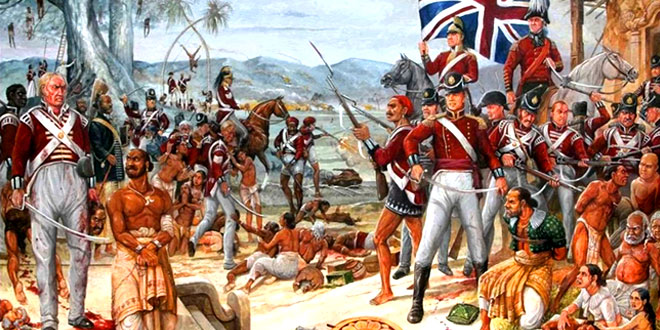Question: What steps were taken by the East India Company to control the market of cotton and silk goods?
Or
The establishment of political power by the East India Company resulted in ruination of the Indian weavers. Support the statement with suitable examples.
Answer:
- Monopoly right: Once the East India Company established political power, it asserted a monopoly right to trade
- New system: After establishing monopoly over trade:t proceeded to develop a system of management and control that would eliminate competition, control costs, and ensure regular supplies of cotton and silk goods. This it did through a series of steps.
- Appointing Gomasthas: The Company tried to eliminate the existing traders and brokers connected with the doth trade, and establish a more direct control over the weavers. It appointed a paid servant called the Gomostha to supervise weavers, collect supplies, and examine the quality of cloth.
- System of advances: To have a direct control over the weavers, the company- started the system of advances. Once an order was placed, the weavers were given loans to purchase the raw material for their production. Those, who took loans had to hand over the doth they produced to the Gomastha. They could not take it to any other trader.
- Use of power: The places where the weaver refused to cooperate the company used its police. At many places weaver were often beaten and flogged for delays in supply.
Question: Why the system of advances proved harmful for the weavers?
Answer:
- No chance of bargaining: The weavers lost any chance of bargaining.
- Leasing of land: Most of the weavers had to lease out the land and devote all their time to weaving. Weaving in fact, came to absorb the labour of the entire family.
- Dependency for food on others: Most of the weavers after losing their land became dependent on others tor the food supplies.
- Clashes with Gomasthas: The new Gomasthas were outsiders, with no long term social link with the village. So they acted arrogantly, marched into villages with the police, and punished weavers for delay in supply. So. there were reports of clashes between weavers and Gomasthas.
Question: ‘By the beginning of the 19th century, there was a long decline of textile exports from India.’ Explain by giving reasons.
Or
Explain three reasons for the decline of Indian textile industry by the end of 19th century.
Answer:
- Development of cotton industries in England: As cotton industries developed in England, industrial group; began worrying about imports from other countries. They pressurized the government to impose import duties on cotton textiles so that Manchester goods could sell in Britain without facing any competition from outside.
- Growth of mills and falling demand: With growing mill; and falling home demand British industrialists persuaded the East India Company to sell British manufactures in Indian markets as well.
- Two edge policy: To sell its manufactures in India East India Company followed a two edged policy i.e. no taxes on import; but high taxes on exports.
- Manchester goods in India: Cotton weavers and small producer; in India thus faced two problems at the same time, their export market collapsed and the local market shrank, being glutted with Manchester imports. Produced by machines at lower costs, the imported cotton goods were so cheap that weavers could no: easily compete with them.
- Shortage of raw material: By the 1860; weavers faced a new problem. They could not get sufficient supply of raw cotton of good quality When the American Civil War broke out and cotton supplies from the US were cut off. Britain turned to India. As raw cotton exports from India increased, the price of raw cotton shot up. Weavers in India were starved of supplies and forced to buy raw cotton at exorbitant prices. In this, situation weaving could not pay.
Question: Who were the entrepreneurs or business groups in India during the 19th century?
Answer:
- Dwarakanath Tagore: He was a leading trader of Bengal. Dwarakanath Tagore accumulated his wealth through China trade, before he turned to industrial investment. He set up six joint stock companies in the 1830s and 40s. Though his enterprises sank in the 19th century, yet he showed way to many of the China traders, who later became successful industrialists.
- Dinshaw Petit: He was a Parsi entrepreneur, and was the founder of the first textile mill in India.
- Jamsetji Nusseruanji Tata: He is generally accepted as the “Father of Indian industry”. He had accumulated his wealth partly from exports to China and partly from raw cotton shipments to England.
- Seth Hukumchand: Seth Hukumchand was a marwari businessman, who set up the first Indian jute mill in Calcutta (Kolkata) in 1917.
- Birlas: The Birlas belonged to the marwari group, who had established a business in cotton dealership.
 Class Notes NCERT Solutions for CBSE Students
Class Notes NCERT Solutions for CBSE Students





